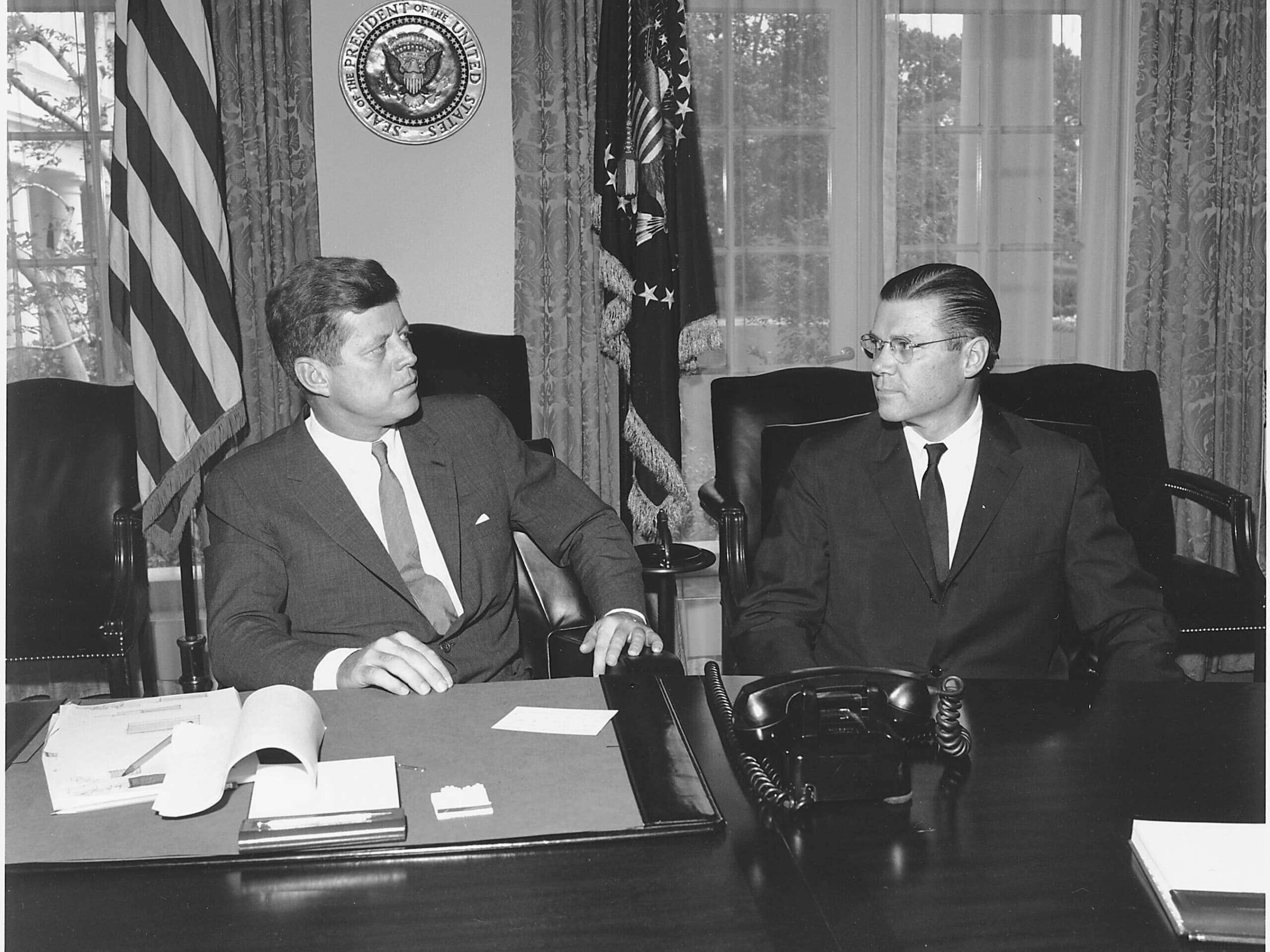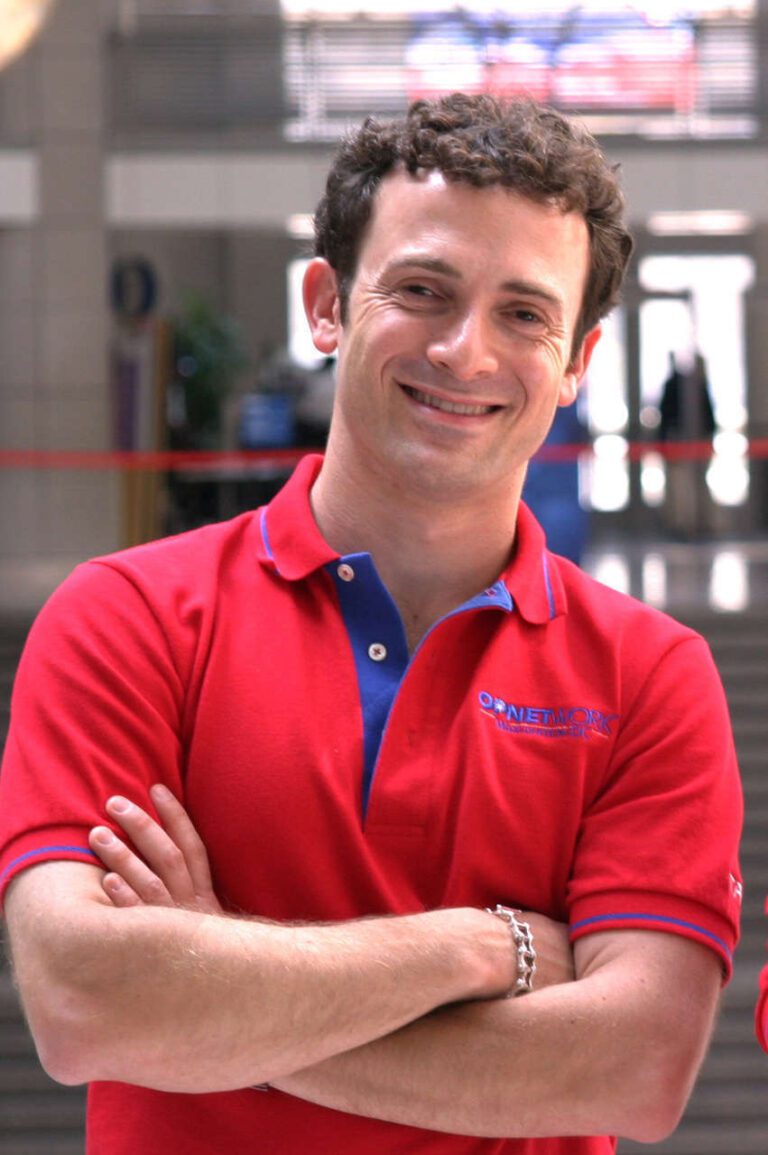So many books have been written about John Kennedy – why write yet another one?
People just can’t get enough books, movies, photographs, anything, about JFK. We take this insatiable appetite for granted because it’s so familiar, but what accounts for it? What was so beguiling about this well-spoken millionaire, with his Boston accent and modish wife? Why does his memory stir such emotion? I examine the usual explanations – his father’s money, his manipulation of the press, his good looks, his high ideals, his wife, his intellect, his shocking death – and more.
I think it is this aspect of Forty Ways to Look at JFK that distinguishes it from the vast library of JFK books. Other books acknowledge Kennedy’s strange power, and some examine it, but none really tries to explain its source.
Forty Ways is an analytic biography, rather than an investigative biography. So much is already known about Kennedy’s life, so many people have been so extensively interviewed – my goal was to make sense of what’s already known, rather than try to uncover new facts. I owe a huge debt to the biographers and memoirists whose massive labors made my kind of book possible…I had so many wonderful sources to draw upon.
You’ve written about Winston Churchill and John Kennedy. How would you compare the two men – and the experience of writing about them?
Although Kennedy revered Churchill, the two leaders were very different. One chapter of Forty Ways – “Kennedy the Fox” – explores the differences in their worldviews.
For me as a biographer, a major difference in writing about them was that when I began writing about Churchill, I knew I believed Churchill was a hero. I saw his flaws and failures, and I detail them in the book, but I never doubted his greatness.
I wasn’t sure about Kennedy. When I started my research, I honestly didn’t know whether I’d decide that JFK was more like Martin Luther King, Junior – a person with weaknesses, but indisputably great – or more like Princess Diana – a person whose public stature is based on glamour and titillation, not on real accomplishment. In fact, one of my chief reasons for choosing Kennedy as a subject was to make up my mind on precisely that point.
In the end, I did decide that Kennedy was truly great, and coming to that realization, and explaining my reasoning, was one of my favorite tasks in writing Forty Ways.Another major difference in writing the two biographies was the importance of photography to the JFK story. As the forty-ways structure shows, I’m fascinated by how the form information takes affects the way it’s understood. As part of this, I’m interested in the impact of photography – how and what people learn from photographs, why they find photos so engaging. (Some people have wondered how Kennedy had time to fulfill his obligations as president, given the amount of time he spent on sexual hijinks. What I wonder is how he had time to sit for so many photographs!)
Forty Ways to Look at JFK is an unconventional biography. Why do you use this “forty-ways” structure?
Forty Ways to Look at JFK is like many biographies rolled into one. Rather than detail the facts of Kennedy’s life, as most biographies do – which can make them so long and crowded that a reader loses the big picture – Forty Ways answers the essential questions (essential, to be sure, in my view). In my forty chapters, I tackle subjects such as: who was Kennedy’s greatest influence? How did he reach the public? What was his most explosive secret? Many of the questions address the central puzzle – what made Kennedy Kennedy?
The forty-ways approach allows me to capture, in one volume, the controversy, glamour, ideals, and high adventure of Kennedy’s life. Forty Ways also demonstrates the limits of biography it’s written in a way that reveals the impossibility of presenting a single, objective portrait of Kennedy. For example, a biographer could point to evidence showing Kennedy planned to pull out of Vietnam after the 1964 election – or to evidence showing Kennedy had no intention of retreating. A biographer could emphasize that Kennedy was proud of his wife and devoted to his children – or a biographer could expose Kennedy’s naked swimming pool parties, his affair with an intern, his dalliances with prostitutes and suspected spies.
I’m very interested in the creative aspects of non-fiction, and specifically, how structure can guide and manipulate readers. One of my goals is to show readers how their conclusions are shaped. Therefore, I use many forms – some very unexpected – to drive home my points about Kennedy. For example, to underscore just how bad Kennedy’s health was, I have a timeline that includes nothing but his medical history. This information is included in Robert Dallek’s excellent JFK biography, but it’s scattered throughout the story of JFK’s life; the shock of the facts is much greater in my account, because I’ve isolated that information.
How have readers reacted to your forty-ways structure?
Before Forty Ways to Look at Winston Churchill was published, I wasn’t sure what readers would think. I love the forty-ways structure: it allows me to deal clearly with many themes without having to weave them through hundreds of pages of chronology; it allows me to focus on the most important aspects of my subject’s life (and leave out the boring bits); it shows the difficulty in arriving in one final, objective judgment of a subject; it’s a creative approach that was nevertheless solidly grounded in fact; and it allows me to say a lot in a short book – I think that the short biography is a venerable form that deserves to be revived. But I didn’t know what readers would think. After the book came out, it became clear that readers embraced the form.
Do you think your approach is better than the traditional chronological biography?
Oh, there’s a place for both. I love the enormous biographies. Sometimes, a reader wants exhaustive detail, wants to sink into the great span of a life. Sometimes, a shorter, more focused book is more satisfying. I do feel that my “forty ways” form permits me to make my points more sharply than do lengthy biographies. So often, with the weight of their detail, encyclopedic biographies leave readers with a fuzzy sense of a subject’s life. My approach allows readers to understand my subject with speed and clarity.
With Kennedy, most serious biographies fall in two groups: those who argue that Kennedy was very historically significant which, to those writers, explains his uncanny hold on the public, and those who argue that his reputation was overrated and based on superficialities. I believe that both approaches misunderstand what was truly important, and truly great, about Kennedy. It wasn’t his policies or accomplishments – which really weren’t very significant – but his tremendous stature in people’s imagination. What made Kennedy Kennedy? Why, despite his failings, did he come to embody such great ideals in the public mind? These seem, to me, to be extraordinarily important questions, and my approach allows me to explain why.
One of the unusual aspects of Forty Ways is that you present different portraits of Kennedy – some heroic, some critical – while most biographies present a single point of view. Why?
That’s right. Forty Ways conveys the debate over Kennedy’s character and accomplishments, and allows readers to judge. Readers will put down this book feeling as though they’ve read not one biography, but a dozen.
As I researched Kennedy’s life, I was struck to see his biographers reach different conclusions from the same facts. Kennedy was an idealistic and courageous statesman – or he was a shallow opportunist. He was a great leader who inspired Americans with his compelling vision of a better country – or he was a gifted entertainer who distracted Americans with glamorous photographs and one-liners.
Instead of writing a biography that would disguise or reconcile conflicting views, I decided to highlight them. I present Kennedy in all his virtues and flaws; his warmth and his cool detachment; his soaring rhetoric and his sordid assignations.
How did you get the idea to present both sides together?
When I was clerking for Justice Sandra Day O’Connor at the Supreme Court, I’d often had the jarring experience of reading a convincing legal brief – and then reading an equally compelling opposing brief. Each side could marshal facts, quotes, and precedent to support opposite conclusions.
In the same way, after reading a good biography, you think you really understand its subject. But if you read several biographies about the same person, you detect the machinations of the biographers.
Facts can be put together to create very different portraits of the same subject. Take me, as an example. I could emphasize that at Yale Law School, I was Editor-in-Chief of the Yale Law Journal, won a writing prize, and met my future husband, and after law school, I went on to clerk for Supreme Court Justice Sandra Day O’Connor. I could mention that my first book, Power Money Fame Sex: A User’s Guide received a starred review from Publishers Weekly and was optioned by Shawn Ryan, a brilliant Hollywood producer, for use in a TV show, and that Forty Ways to Look at Winston Churchill was a best-seller. I could include the fact that my father-in-law is Robert Rubin, the former Treasury Secretary.
Or I could paint a very different picture of myself. I could emphasize that after law school, I worked only briefly as a lawyer, and then despite the huge investment of money and effort, abandoned that field to turn my efforts to writing at a point when I’d already written two dreadful novels I’d abandoned. I failed a national math exam, wasn’t involved in a single extracurricular activity in college, and didn’t have my first boyfriend until I was twenty-three years old. I’m legally blind, left-handed, completely uncoordinated, a constant hair-twister, and afraid to drive.
All these facts are true. They leave very different impressions.
Did you hesitate to tackle a massive subject like Kennedy, given that you’re not a professional historian?
Not at all. This biography doesn’t seek to rival the works of professional historians – after all, given the vigorous Kennedy industry, there’s no pressing need for another scholarly Kennedy biography. This book aims instead to present a personal view of a great man. I’ve written about the aspects of Kennedy’s life and character that struck me as most interesting and significant, and put them into an engaging form. My goal wasn’t to uncover some new fact about Kennedy’s intensively researched life. Instead, I wanted to make sense of the facts already known.
My chief interest as a writer is human character. I wrote about Kennedy because I wanted to understand him. What made Kennedy, Kennedy? What were the nature of his gifts and accomplishments? Why is he so vivid in the public mind, even after forty years – and so beloved, despite his shortcomings?
Was there anything you found in your research that particularly surprised or moved you?
A striking thing about studying Kennedy – and I discuss this in the book – is the overwhelming feeling of dramatic irony. So much happens to the Kennedy family! You look at pictures of them from, say, 1960, and you can’t help but be moved by knowing what’s in store for them. For example, there’s a wonderful picture of JFK walking hand-in-hand with his son, who is holding a toy airplane. John Junior was obsessed with airplanes as a child. Father and son don’t know, but we do, that JFK will be shot, and that John will die in a plane crash.
Or consider the fact that Kennedy met his hero Winston Churchill in 1955 – with Jackie on Aristotle Onassis’s yacht.
Another poignant anecdote about John Junior was that, not long after the assassination, Dave Powers – a very close JFK friend and aide – was spending time with the little boy. Powers mentioned to John, “Davy Crockett had a rifle,” and John answered, “A bad man shot my daddy in the head with a rifle.”
I was also struck by a comment by prostitute Leslie Devereux, who recalled visiting Kennedy twice at the White House – once, in a small room off the Oval Office. Of course, I immediately saw parallels to President Clinton’s encounters with Monica Lewinsky.
Through your research, did you come to feel that you knew Kennedy?
I think it’s very dangerous for biographers to allow themselves to imagine that they “know” their subjects. If there’s one thing to learn from the study of human nature, it’s that you can never know anyone.
Nevertheless, I certainly did feel that I got a sense of Kennedy. For example, I remember reading in William Manchester’s worshipful The Death of a President a description of how Kennedy kept his personal Bible in Air Force One and read it at night before going to sleep – and that this Bible was then used by Johnson to take the presidential oath.
This just didn’t ring true to me. As far as I knew, Kennedy never made a habit of reading the Bible regularly or even keeping one at hand, and it didn’t seem like him, and if he had, it seemed likely that such a fact would have been trumpeted about. So I rejected Manchester’s account, even though he’s a reliable source and certainly seemed to have very specific details. Sure enough, I came across a newspaper article that reported that Johnson took the oath using a new Bible – one still wrapped in cellophane – and the JFK Bible described by Manchester was nowhere to be found.
So you think there are many pitfalls that biographers must try to avoid, in writing about their subjects?
Absolutely. There are so many temptations – to generalize from what you know; to treat your subject like a character in a novel, using fictional devices such as metaphors, foreshadowing, and symbolism; or, what I think is perhaps the most dangerous, to supply motivation to your subject when all you can know are actions.
Here’s a great example of the perils for the biographer, from Harris Wofford’s wonderful memoir, Of Kennedy and Kings. In the first draft of his ground-breaking The Making of the President 1960, renowned political journalist Teddy White had pegged the entire book to a remark by Kennedy late on election night, when White thought Kennedy said, “I’m angry.” But when White showed the draft to Kennedy (an example of JFK’s excellent press relations, by the way!), Kennedy corrected him. “That’s not what I said. What I said was ‘I’m hungry.’” Quite a difference in meaning.
To me, that story illustrates the perils of giving too much weight to telling details, or symbolic actions, or portentous remarks. They can so easily be misperceived and distorted – and yet the urge to exploit them is irresistible.
This was also an important issue in your Churchill book.
That’s right. One theme of my Churchill biography was an examination of fallacy of the “telling detail” – telling details such the fact that Churchill shot men pointblank, in the face, or wore pink silk underwear, or cried frequently; and one theme of my Kennedy biography is the fallacy of the “unguarded moment.” People believe that Kennedy was as natural, candid, and unguarded as he appeared, and took those qualities to be evidence of his character – but in reality he was in tight control of his image at all times
How has public perception of Kennedy altered with time?
Kennedy’s personal reputation has been caught by two changes. First, the moral climate has eased to permit discussion of facts that, during his life, the press would never have dreamed of disclosing. The press never quoted Kennedy saying, “I am going to fucking well take Ohio” and didn’t report that Kennedy threw a party featuring New York prostitutes in Palm Beach over the New Year in 1963. But at the same time, the moral climate has tightened to make his behavior more opprobrious. Actions like pursuing compulsive adultery within sight of his staff, placing women on the government payroll to have them available for sex, and disregarding security by sleeping with strangers, seem more shocking now than at the time, to those who knew about this behavior.
And yet one of the great mysteries about Kennedy is that, despite the explosive revelations of sexual escapades, secret White House tapings, and Mafia contacts, he remains one of the most popular figures in American history. Somehow, for most people, the lurid details about Kennedy don’t tarnish his brilliant reputation. The public eagerly greets each new tidbit, but attempts to show the “real” Kennedy do nothing to shatter his legend. Why? I explore that issue in the book.
Your first book was Power Money Fame Sex: A User’s Guide. How did you happen to write such different books?
To me, all my books are closely related, because they explore my chief interest, human nature.
If you write another “Forty Ways” biography, whom would you choose?
So many people would make fascinating subjects, and the forty-ways structure gives me so much flexibility – Leonardo da Vinci, Queen Victoria, Napoleon, and Jesus would be my top choices.
What other projects are you working on?
I’m in the planning stages for a book called The Happiness Project. As in my last books, I’m exploring an aspect of human nature in this case, happiness.
When I began to think about happiness, I realized that, at least for me, the key to happiness was being more virtuous. But what, exactly, should I do to try to be more virtuous and happy? The Happiness Project will be a memoir of a year I spend trying to be a better, happier person. Each month, I’ll tackle a different aspect of life (January might be devoted to work and recreation, for example) – and I’ll gather insights on happiness and virtue from anywhere I can: Aristotle, Thoreau, Samuel Johnson, Dale Carnegie. I’ll explain what works and what doesn’t and whether I end my year more virtuous and happy.
I’m also working on a project, On Profane Waste, a collaboration with artist Dana Hoey. My text accompanies a series of her photographs in a meditation on the nature of “profane waste,” which I define as the deliberate waste of a person’s own possession that ignites a shock of emotion – of a taboo violated, or a rite observed. It will be published in spring 2006 by Gregory R. Miller & Co.
Also, in the fall of 2004, Hollywood’s brilliant Shawn Ryan creator and executive producer of F/X’s critically acclaimed drama, “The Shield,” among other things optioned my first book, Power Money Fame Sex: A User’s Guide, to be an element in a show he sold to NBC.




